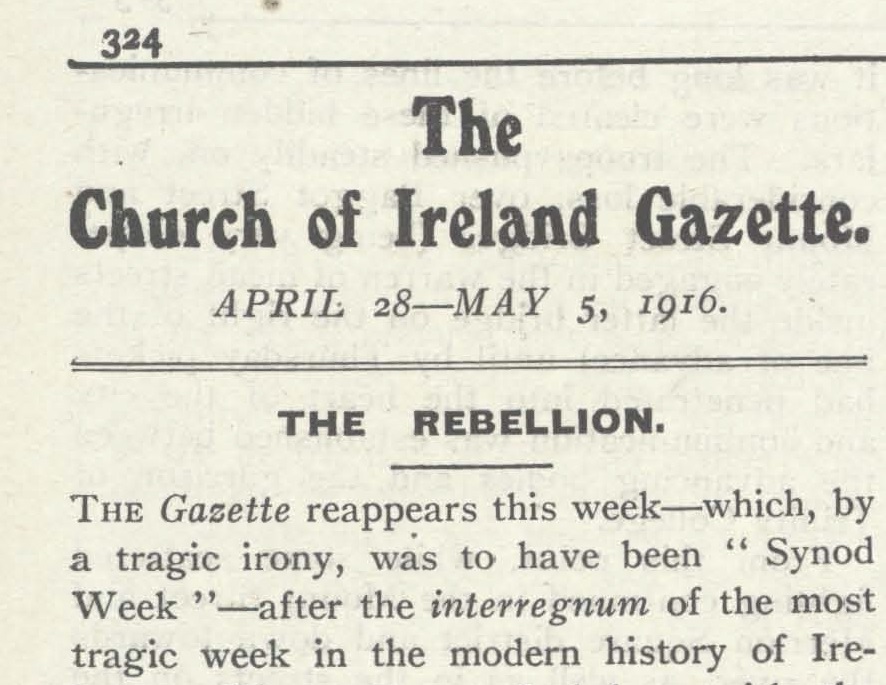Reporting the Rising: A Church of Ireland Perspective
As some of you may know 2016 marks the 160th anniversary of the Church of Ireland Gazette. It was first published in March 1856. Initially known as the Irish Ecclesiastical Gazette (up to 1900) for the first three years of its existence the paper appeared on a monthly basis as a ‘monthly repertory of miscellaneous church news’. However, from October 1859 it began to appear weekly, and has appeared virtually every week since then with publication falling on a Friday.
One exception to the weekly pattern occurred 100 years ago this month for the edition scheduled for Friday 28th April 1916. Although ‘all editorial arrangements were made for publication in Easter Week’, an editorial note explained how ‘… we were compelled … to suspend publication for that week’, the paper being ‘unavoidably postponed pending the restoration of the electrical current’ supplying its printed machinery. Indeed, the paper’s premises, located (until the 1960s) at number 61 Middle Abbey Street, had a remarkable escape from the fire which devastated the Sackville Street area, and was the last building on that side of the street to be saved – the fire ‘stopping immediately short of this office’. A week later a special combined edition for 28th April-5th May 1916 appeared which provides graphic detail of unfolding events.
Almost half of the edition was devoted to several aspects of the Rising and its consequences for the Church of Ireland community, with several fascinating human-interest stories, for the city of Dublin and indeed for national politics. Whilst the editorial in this special edition took a predictable condemnatory position in the immediate aftermath of the Rising – summing up events as: ‘the most tragic week in the modern history of Ireland’ – it was also tempered by reality and a sense that Ireland had been utterly changed by the events of Easter Week.

Writing on the day that ‘ought to have seen the opening of the General Synod’ – postponed for the first time since its inception in 1870 on account of martial law – and the fact that ‘Sackville Street’ and its environs were a ‘heap of ruins’, it bemoaned: ‘The pity of the citizens murdered, the young English soldiers shot down on Irish soil, the callow lads led into treason: the shame of this stab in the back of our brave soldiers in Flanders and Salonika; and the horror of Dublin, fired by the hands of her own sons, and of Irish blood shed by Irish hands.’
From 1st April 2016, followers of Archive of the Month on the RCB library website will be able to explore the content of the special issue online, where this and all issues of the paper during the commemorative period 1911-1923 are digitized and freely searchable through this link: www.ireland.anglican.org/library/archive
At the end of the month, readers of the Gazette will also be able to read the special edition 28th April-5th May 1916 as it was printed in 1916, when a commemorative copy will be reprinted and circulated – a project supported by the Irish Government’s Department of Arts, Heritage and the Gaeltacht.
